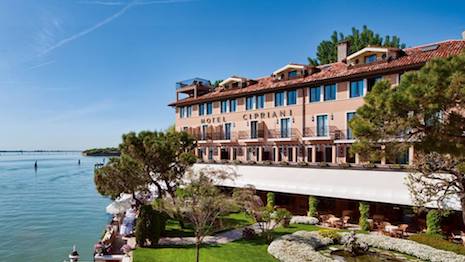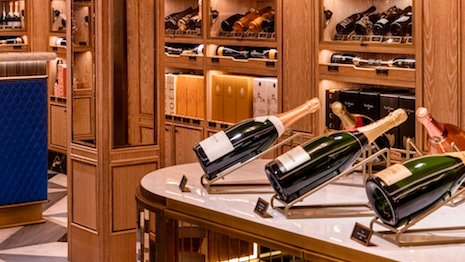 Image credit: Neiman Marcus
Image credit: Neiman Marcus Global luxury consumers’ plans for purchasing more luxury goods in the upcoming year have steadily increased year-over-year, boding well for the business in 2019.
Twenty-nine percent of those who purchased luxury goods in 2018 plan to increase their spending within 2019, compared to 28 percent in 2018 and 26 the previous year. Luxury spending in the United Kingdom is likely to see the greatest spending compared to other countries, according to Luxury Institute’s 2019 State of the Luxury Industry report.
“Although economic growth rates around the world have been uneven, there is still cautious optimism among affluent consumers around the globe,” said Milton Pedraza, CEO of the Luxury Institute, New York.
Luxury spending growth
Luxury Institute surveyed 3,926 affluent consumers from the United States, United Kingdom, Italy, France, Germany, China and Japan about their year-ahead luxury spending plans.
The research predicts that leisure travel will see the steepest increase in spend, just ahead of dining, ready-to-wear, shoes, entertainment and technology.
LVMH is acquiring Belmond to take advantage of growing travel spend. Image credit: Belmond
Consumers are split on plans to increase spending within the art, spirits and watch categories.
The U.K. is likely to reach a high of $21,193 for average luxury purchasing per consumer within the next year. Following are Italy with $18,832, China with $17,262 and France and the United States, both at $16,000.
Among the markets studied, Germany is expected to see the lowest average spend for 2019 with $10,671.
Despite China's ongoing economic and trade issues with the U.S., more than half of China’s luxury consumers are planning on increasing their spend in 2019.
Italy is expected to see growth in luxury spend, with 37 percent planning on increasing their expenditures. In the U.K., 34 percent plan to do so as well.
Harrods' Fine Wine and Spirits room capitalizes on growth of U.K. luxury spend. Image credit: Harrods.
However, in Japan, only 16 percent plan to increase their purchases of luxury goods and 9 percent plan to curb their spending.
Twenty-eight percent of French consumers plan on buying more luxury in 2019, while 21 percent of both U.S. and German shoppers say they expect to increase their spending on high-end goods.
Consumption trends
Affluent Chinese consumers are projected to account for up to 44 percent of the global luxury consumption across the globe by 2025, according to McKinsey & Company.
This would double their current level of spending to $147 billion (1 trillion yuan).
The consulting company, which issued a Chinese-language industry report on June 13, also expects the total market share of the global luxury market to reach $397 billion (2.7 trillion yuan) in 2025, which will be mainly driven by China (see story).
Another driving force in luxury spending growth is travel.
The gap between the average traveler’s vacation spend and that of an affluent individual is widening, with luxury vacationers outspending the rest by more than six times the typical amount.
According to EyeforTravel’s “The Global Luxury Travel Consumer” report, the average traveler spends around $1,690 per trip, but the luxury consumer’s budget is approximately $5,365 per vacation. As the cost and frequency of affluent trips increases, the hospitality sector will need to respond by curating exclusive experiences and amenities to ensure affluents continue to be enticed and not become bored by standard stays (see story).
“[Affluent] individuals are either current or potential clients, and the key to success is to develop long-term relationships that last despite booms or busts," Mr. Pedraza said.

